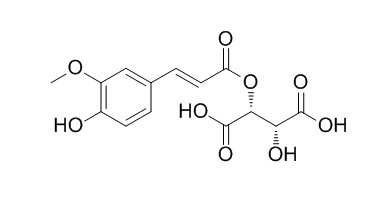Providing storage is as stated on the product vial and the vial is kept tightly sealed, the product can be stored for up to
24 months(2-8C).
Wherever possible, you should prepare and use solutions on the same day. However, if you need to make up stock solutions in advance, we recommend that you store the solution as aliquots in tightly sealed vials at -20C. Generally, these will be useable for up to two weeks. Before use, and prior to opening the vial we recommend that you allow your product to equilibrate to room temperature for at least 1 hour.
Need more advice on solubility, usage and handling? Please email to: service@chemfaces.com
The packaging of the product may have turned upside down during transportation, resulting in the natural compounds adhering to the neck or cap of the vial. take the vial out of its packaging and gently shake to let the compounds fall to the bottom of the vial. for liquid products, centrifuge at 200-500 RPM to gather the liquid at the bottom of the vial. try to avoid loss or contamination during handling.
African Journal of Biotechnology, 2011,10(66):14767-14777.
Components of non-anthocyanin phenolic compounds in wines of Vitis amurensis and its hybrids.[Reference:
WebLink]
METHODS AND RESULTS:
The non-anthocyanin phenolic compounds in wines from five grape cultivars (Zuo Shan Yi, Zuo Shan Er, Shuang Hong, Shuang You and Shuang Feng) of Vitis amurensis and two hybrid cultivars (Zuo Hong Yi and Zuo You Hong) were examined by high-performance liquid chromatography/electrospray ionization tandem mass spectrometry (HPLC/ESI-MS/MS) technique in this study. The non-anthocyanin phenolic compounds detected from 7 grape cultivars included 5 benzoic acids, 7 cinnamic acids, 5 flavan-3-ols, 9 flavonols and 4 stilbenes. The detected benzoic acids were gallic acid, protocatechuic acid, syringic acid, ethyl gallate, and ellagic acid. The cinnamic acids were trans-cinnamic acid, transcaftaric acid, trans-cutaric acid, ferulic acid, trans-Fertaric acid, caffeic acid and ethyl caffeic acid. The flavan-3-ols were procyanidin B1, catechin, procyanidin B2, epicatechin, and trimeric procyanidin C1. The flavonols were dihydroquercetin, myricetin-3-glucoside, quercetin-3-galactoside, quercetin-3- glucuronide, quercetin-3-glucoside, myricetin, quercetin, naringenin and leutolin. The stilbenes were trans-piceid, cis-piceid, trans-resveratrol and cis-resveratrol.
CONCLUSIONS:
Principal components analysis showed that the non-anthocyanin phenolic compounds in wines were mainly composed of cinnamic acids, flavan-3-ols and benzoic acids. In addition, systematic cluster analysis suggested that the nonanthocyanin phenolic compound profiles were helpful for the classification of these cultivars of V. amurensis and the hybrids.



